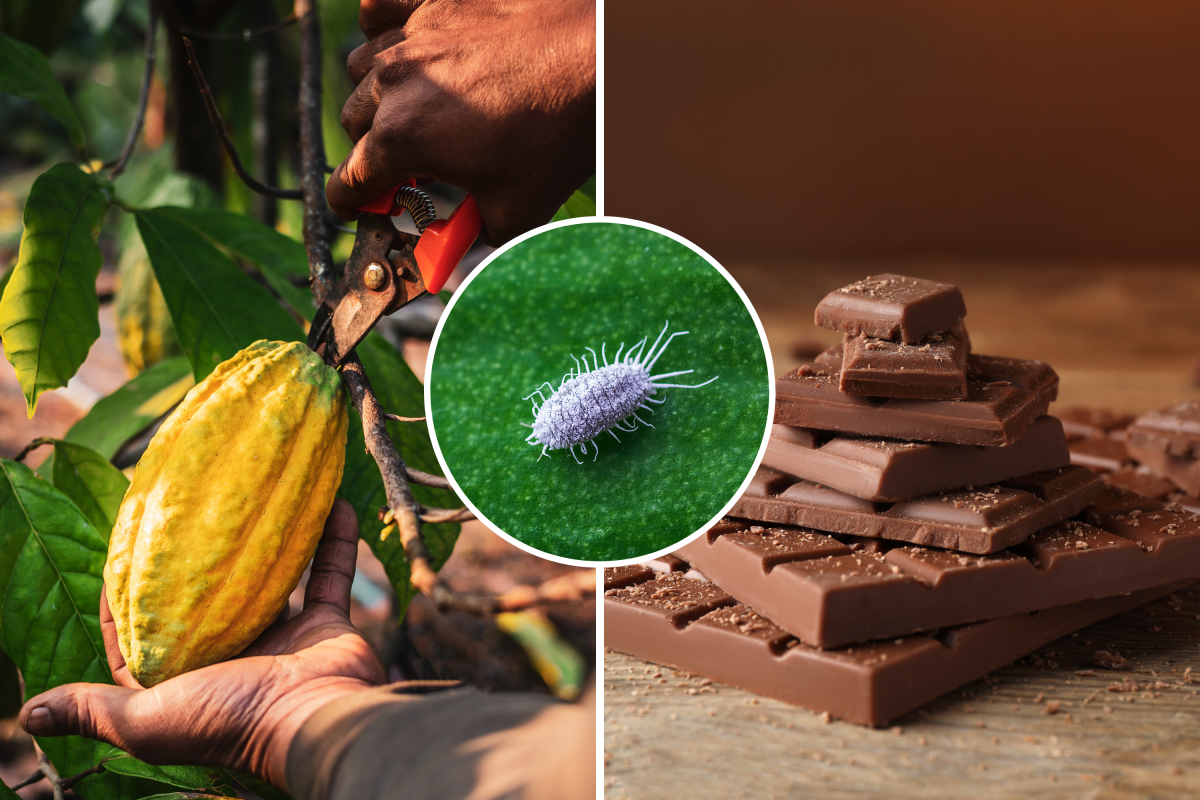Your favorite chocolate treat might be at risk in the future thanks to a virus that is savaging cacao trees.
These cacao trees grow the all-important cocoa beans used to create chocolate. Fifty percent of the chocolate in the world originates from cacao trees in West Africa, notably Côte d'Ivoire and Ghana.
According to a new paper in the journal PLoS ONE, between 15 and 50 percent of the harvest of Ghanaian trees is being lost due to the spread of an infection known as cacao swollen shoot virus disease (CSSVD).
This virus is spread between trees via small insects known as mealybugs, which feed on the leaves, buds and flowers of infected trees and then carry the virus to healthy trees. The virus can then lead to the swelling of shoots, leaf discoloration, vein clearing, and the distortion of leaf and shoot growth.
In the first year of infection, infected trees have a much decreased cacao yield, and usually die a few years afterward. Over 250 million trees have died already as a result of infection by this virus.
"This virus is a real threat to the global supply of chocolate," study co-author Benito Chen-Charpentier, a professor of mathematics at The University of Texas at Arlington, said in a statement.
The spread of the virus is proving difficult to stem, as the mealybug vectors are incredibly hard to control.
"Pesticides don't work well against mealybugs, leaving farmers to try to prevent the spread of the disease by cutting out infected trees and breeding resistant trees. But despite these efforts, Ghana has lost more than 254 million cacao trees in recent years," Chen-Charpentier said.
One possible solution involved vaccinating the trees themselves against the virus. However, these vaccines are very expensive, and vaccinated trees have a lower cocoa yield.

There may be another way to slow the spread: in the new paper, researchers have modeled how far apart the trees need to be planted in order to stop the mealybugs from traveling between trees.
"Mealybugs have several ways of movement, including moving from canopy to canopy, being carried by ants or blown by the wind," Chen-Charpentier said. "What we needed to do was create a model for cacao growers so they could know how far away they could safely plant vaccinated trees from unvaccinated trees in order to prevent the spread of the virus while keeping costs manageable for these small farmers."
In the paper, the researchers describe two models that surround unvaccinated trees with vaccinated trees, creating a sort of herd immunity in the plantation.
"While still experimental, these models are exciting because they would help farmers protect their crops while helping them achieve a better harvest," Chen-Charpentier said. "This is good for the farmers' bottom line, as well as our global addiction to chocolate."
Do you have a tip on a science story that Newsweek should be covering? Do you have a question about viruses? Let us know via science@newsweek.com.
Uncommon Knowledge
Newsweek is committed to challenging conventional wisdom and finding connections in the search for common ground.
Newsweek is committed to challenging conventional wisdom and finding connections in the search for common ground.
About the writer
Jess Thomson is a Newsweek Science Reporter based in London UK. Her focus is reporting on science, technology and healthcare. ... Read more
To read how Newsweek uses AI as a newsroom tool, Click here.








